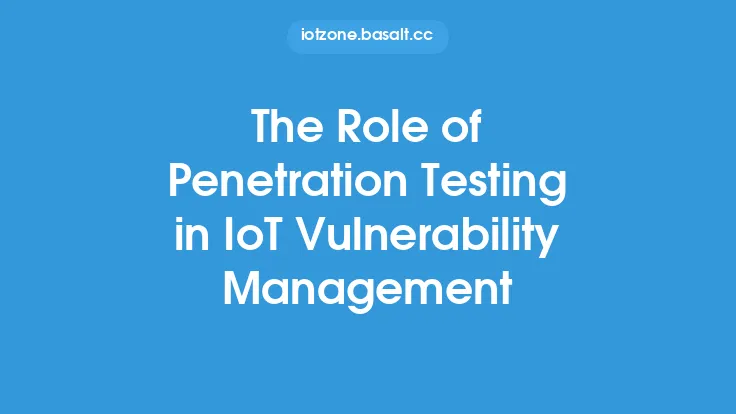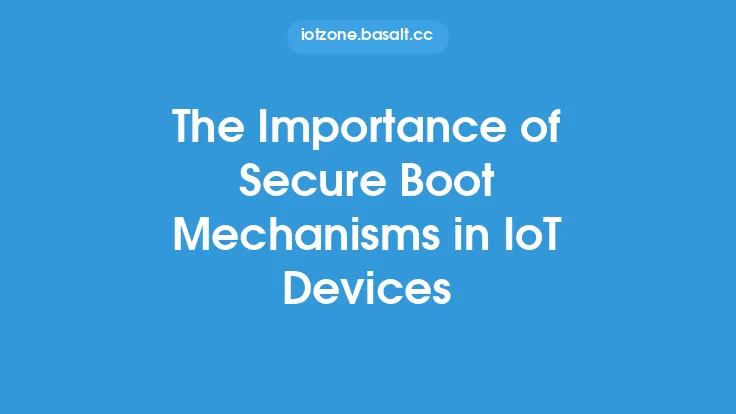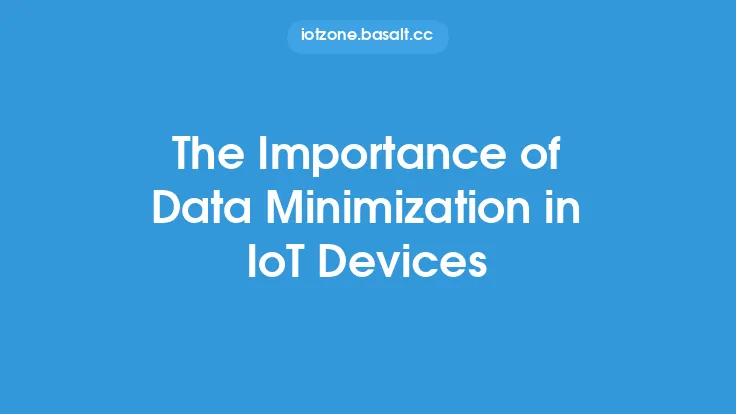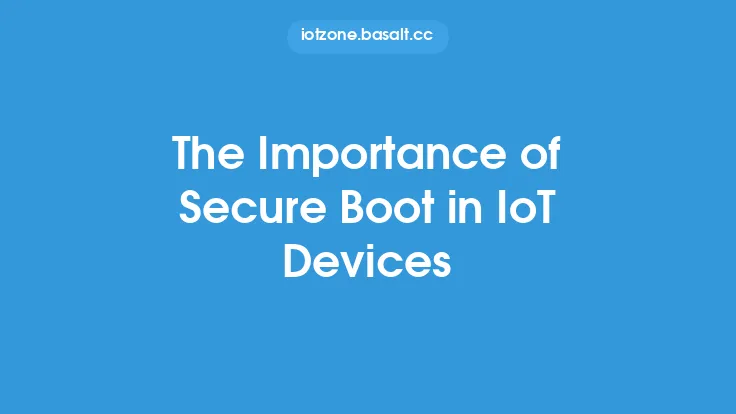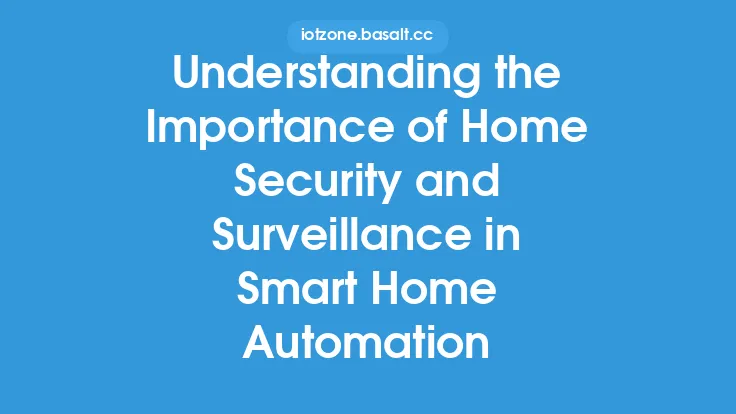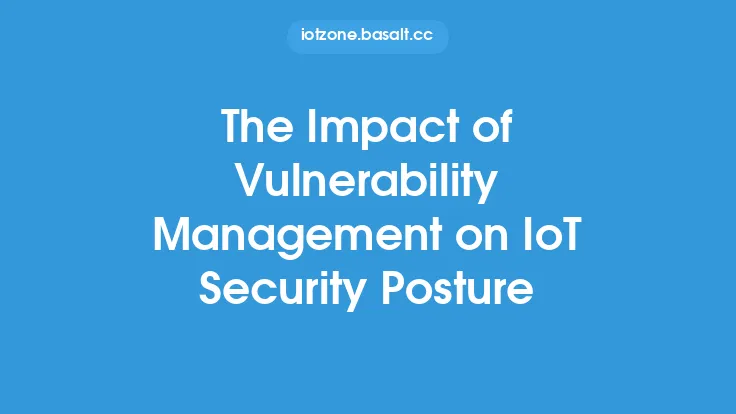The increasing number of Internet of Things (IoT) devices has led to a significant rise in the attack surface, making them a prime target for cyber attackers. IoT devices, ranging from smart home appliances to industrial control systems, are vulnerable to various types of attacks, including hacking, malware, and denial-of-service (DoS) attacks. One of the most effective ways to identify and mitigate these vulnerabilities is through vulnerability scanning. In this article, we will delve into the importance of vulnerability scanning in IoT devices, its benefits, and the technical aspects of implementing a vulnerability scanning program.
What is Vulnerability Scanning?
Vulnerability scanning is the process of identifying and classifying vulnerabilities in IoT devices. It involves using specialized software to scan the device's network, operating system, and applications to detect potential vulnerabilities. Vulnerability scanning can be performed manually or automatically, depending on the size and complexity of the IoT ecosystem. The goal of vulnerability scanning is to identify vulnerabilities before they can be exploited by attackers, thereby preventing potential security breaches.
Benefits of Vulnerability Scanning in IoT Devices
Vulnerability scanning offers several benefits for IoT devices, including:
- Improved security posture: Vulnerability scanning helps identify vulnerabilities that could be exploited by attackers, allowing organizations to take proactive measures to mitigate them.
- Reduced risk of attacks: By identifying and remediating vulnerabilities, organizations can reduce the risk of successful attacks on their IoT devices.
- Compliance with regulations: Vulnerability scanning can help organizations comply with regulatory requirements, such as those related to data protection and privacy.
- Cost savings: Identifying and remediating vulnerabilities early on can help organizations avoid the costs associated with responding to and recovering from a security breach.
Technical Aspects of Vulnerability Scanning
Vulnerability scanning involves several technical steps, including:
- Network discovery: The first step in vulnerability scanning is to discover the IoT devices on the network. This can be done using network scanning tools, such as Nmap or OpenVAS.
- Vulnerability identification: Once the devices have been discovered, the next step is to identify potential vulnerabilities. This can be done using vulnerability scanning tools, such as Nessus or Qualys.
- Risk assessment: After identifying vulnerabilities, the next step is to assess the risk associated with each vulnerability. This can be done using risk assessment tools, such as CVSS (Common Vulnerability Scoring System).
- Remediation: The final step is to remediate the identified vulnerabilities. This can involve applying patches, updating software, or implementing other security measures.
Types of Vulnerability Scanning
There are several types of vulnerability scanning, including:
- Internal vulnerability scanning: This type of scanning involves scanning the internal network to identify vulnerabilities in IoT devices.
- External vulnerability scanning: This type of scanning involves scanning the external network to identify vulnerabilities in IoT devices that are exposed to the internet.
- Authenticated scanning: This type of scanning involves scanning IoT devices using authenticated credentials to identify vulnerabilities that may not be visible through unauthenticated scanning.
- Unauthenticated scanning: This type of scanning involves scanning IoT devices without using authenticated credentials to identify vulnerabilities that are visible to unauthorized users.
Challenges and Limitations of Vulnerability Scanning
While vulnerability scanning is an effective way to identify and mitigate vulnerabilities in IoT devices, there are several challenges and limitations to consider, including:
- Complexity of IoT ecosystems: IoT ecosystems can be complex and diverse, making it challenging to implement effective vulnerability scanning programs.
- Limited resources: Small and medium-sized organizations may not have the resources or expertise to implement effective vulnerability scanning programs.
- Evasion techniques: Attackers may use evasion techniques, such as encryption or obfuscation, to evade detection by vulnerability scanning tools.
- False positives and false negatives: Vulnerability scanning tools may generate false positives or false negatives, which can lead to unnecessary remediation efforts or missed vulnerabilities.
Best Practices for Vulnerability Scanning in IoT Devices
To implement an effective vulnerability scanning program for IoT devices, consider the following best practices:
- Regularly scan for vulnerabilities: Regular scanning can help identify vulnerabilities before they can be exploited by attackers.
- Use a combination of scanning tools: Using a combination of scanning tools, such as network scanning and vulnerability scanning tools, can help identify a wider range of vulnerabilities.
- Implement a risk-based approach: Implementing a risk-based approach to vulnerability scanning can help prioritize remediation efforts based on the risk associated with each vulnerability.
- Continuously monitor and update: Continuously monitoring and updating vulnerability scanning tools and techniques can help ensure that the program remains effective over time.
Conclusion
Vulnerability scanning is a critical component of IoT security, as it helps identify and mitigate vulnerabilities in IoT devices. By understanding the benefits, technical aspects, and challenges of vulnerability scanning, organizations can implement effective vulnerability scanning programs to improve the security posture of their IoT devices. Regular scanning, using a combination of scanning tools, implementing a risk-based approach, and continuously monitoring and updating are all best practices that can help ensure the effectiveness of a vulnerability scanning program. By prioritizing vulnerability scanning, organizations can reduce the risk of successful attacks on their IoT devices and protect their sensitive data and systems.
